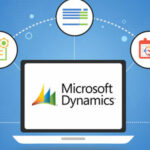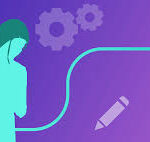When technology is integrated into the educational system, progress is rapid. High-quality software and apps are crucial to the success of nearly every industry today, and schooling is no exception. However, in this case, there can be no turning back to antiquated methods of instruction because the Education sector has reached a watershed moment by offering exceptional quality services. Users’ attitudes toward technology have been swayed by the findings made in academic organizations. Many situations, such as the epidemic, have worked out for the best naturally. There will definitely be more tech-savvy workers and pupils who are ready to use cutting-edge online education software and applications once this period is over. This is a harbinger of good news for the school software industry.
You understand the technology and have the plan to use it. Companies that lack in-house app development expertise can order education software development services to create one for them.
What Makes Teaching Apps Great
Before creating and developing, you should know what you want your educational software to do since there are many options. Instructional software can benefit all pupils if properly designed. Teaching software should incorporate the best educational software features to help pupils of all ages and fields understand the material. Usually, all they want from a learning aid is
- It’s important that the program we build is user- and community-centric.
- Educators, students, and others must like it.
- It needs to be user-friendly.
To maximize pupil learning, simplicity is essential. That is, to quickly grasp how to set it up, store it, and use it independently, with no further instruction.
Any good teaching program should have these and more.
- Welcoming and Simple Usage Interface
Users naturally want the app’s look. Consider monitor sizes when making an app. Choose attractive, easy-to-use ones. Well-designed software has easy menus and back ends. The software’s icons and framework should be easy for grade-level students to use.
- User-centered Design
Users want to customize educational aids. This will assure a good learning experience for teachers, pupils, and management. Teachers may post lesson notes, and tests, arrange courses, give live talks and possibly record them, and more.
Different groups will have distinct traits and situations. Students can check job marks, tests, questions, and due date plans, and log courses on their accounts. With a tailored strategy that allows for customization, educational apps can enhance learning.
- Flexible Sizing and Layout Options
Some pupils favor a different class than their trainer offers. Anyone interested can rapidly see what courses are offered and which teachers are qualified to teach them. Any idea can be implemented easily with flexible, extensible software. To keep and recover work, tutors and pupils should have program accounts. Even in the same class, pupils can customize their learning tools.
- Adaptable Visuals with Minimal Clutter
Graphics and style instantly come to mind for school technology. Even novice students and tutors can use the program’s framework. It’s pointless to make an app with a complex UI. Any industry’s apps should be simple and responsive. Consumers love interactivity because it demands their involvement. A call-to-action sign (CTA) can enable this interaction, but it can also be used for data input, front-end interaction, customized information management, data change, priority settings, and more. Many things can change.
Apps shouldn’t be complicated, though. Students are apt to like a nice UI. Ask the python development agency how to make a great app today.
- Optimal Idle Performance
Internet connectivity powers apps. In nations with poor Internet connectivity, it can fret. The app must allow students to obtain lessons offline. This will keep users engaged and encourage them to use your app offline. You can track how many people have viewed the lesson or purchased the education software by looking at the number of downloads for each individual session. This helps with updating courses and enhancing apps, too.







